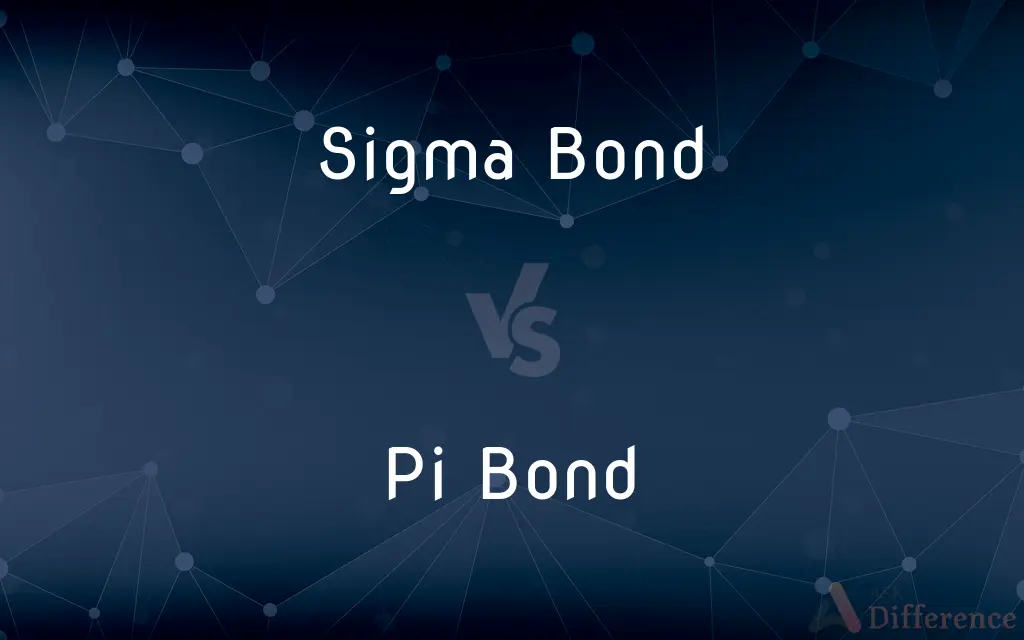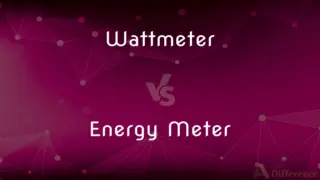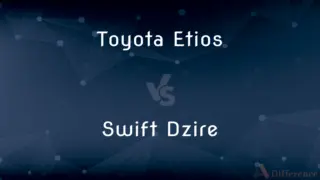Sigma Bond vs. Pi Bond — What's the Difference?
By Tayyaba Rehman — Published on January 28, 2024
Sigma bonds involve head-on overlapping of atomic orbitals, forming a strong bond. Pi bonds are formed by the side-on overlapping of orbitals, typically weaker than sigma bonds.

Difference Between Sigma Bond and Pi Bond
Table of Contents
ADVERTISEMENT
Key Differences
Sigma (σ) bonds are the strongest type of covalent chemical bond, formed by the head-on overlapping of atomic orbitals. These bonds are found in all single covalent bonds and are characterized by their symmetrical distribution of electron density around the axis connecting the bonded nuclei. Pi (π) bonds, on the other hand, are formed from the side-on overlapping of p-orbitals, with electron density concentrated above and below the plane of the nuclei. They are typically found in double and triple bonds, alongside sigma bonds.
Sigma bonds allow for free rotation of the bonded atoms around the bond axis due to their cylindrical symmetry. This property gives molecules with sigma bonds flexibility in their structures. In contrast, pi bonds restrict this rotation because of their parallel p-orbital overlap, which results in fixed planar structures.
The formation of a sigma bond involves either s orbitals, p orbitals, or a combination of both. This versatility makes sigma bonds more common in organic and inorganic molecules. Pi bonds are limited to p orbitals and are thus less versatile in how they can be formed.
Sigma bonds are generally stronger than pi bonds due to the direct overlap of orbitals, leading to a greater density of shared electrons between the bonded atoms. The side-on overlap in pi bonds is less effective at sharing electrons, making them weaker in comparison.
From a chemical reactivity standpoint, pi bonds often participate in reactions because their electrons are more loosely held and thus more reactive. Sigma bonds, being stronger and more stable, are less likely to be involved in chemical reactions.
ADVERTISEMENT
Comparison Chart
Orbital Overlap
Head-on overlapping of orbitals
Side-on overlapping of p-orbitals
Bond Strength
Stronger due to direct overlap
Weaker than sigma bonds
Rotation of Bonded Atoms
Allows free rotation
Restricts rotation due to fixed planar structure
Formation
Involves s and/or p orbitals
Limited to p orbitals
Chemical Reactivity
Less reactive, more stable
More reactive, participates in reactions
Compare with Definitions
Sigma Bond
Allows for free rotation around the bond axis.
Ethane molecules rotate freely around the sigma bond.
Pi Bond
Formed by the side-on overlapping of p-orbitals.
The double bond in ethene consists of one sigma and one pi bond.
Sigma Bond
Characterized by symmetrical electron distribution.
The electron density in a sigma bond is evenly distributed around the bond axis.
Pi Bond
Less effective at sharing electrons than sigma bonds.
Pi bonds are weaker because their electron sharing is not as direct as in sigma bonds.
Sigma Bond
Found in all single covalent bonds.
Every carbon-carbon single bond is a sigma bond.
Pi Bond
More reactive and participates in chemical reactions.
The pi bonds in alkenes are reactive and undergo addition reactions.
Sigma Bond
Involves s or p orbitals in formation.
The sigma bond in HCl involves an s orbital from hydrogen and a p orbital from chlorine.
Pi Bond
Typically found in double and triple bonds.
In acetylene, the triple bond consists of one sigma and two pi bonds.
Sigma Bond
A bond formed by the head-on overlapping of orbitals.
The single bond in H2 is a sigma bond.
Pi Bond
Restricts rotation, creating a fixed planar structure.
The pi bond in ethene prevents rotation, maintaining a planar molecule.
Common Curiosities
Can pi bonds exist independently?
No, they always accompany a sigma bond in double or triple bonds.
What is a pi bond?
A covalent bond formed by the side-on overlap of p-orbitals.
Do sigma bonds allow molecular rotation?
Yes, molecules can rotate around sigma bonds.
What types of orbitals form sigma bonds?
Both s and p orbitals can form sigma bonds.
Can pi bonds rotate?
No, pi bonds restrict rotation, leading to fixed structures.
What is a sigma bond?
A covalent bond formed by direct overlap of atomic orbitals.
Where are sigma bonds found?
In all single covalent bonds.
How do pi bonds affect molecular shape?
They result in fixed, planar structures.
Which is stronger, sigma or pi bond?
Sigma bonds are stronger due to direct orbital overlap.
Do all organic molecules have sigma bonds?
Yes, all organic molecules contain sigma bonds.
Are pi bonds reactive?
Yes, pi bonds are more reactive due to looser electron sharing.
Can a single bond be a pi bond?
No, single bonds are always sigma bonds.
What kind of structures do sigma bonds form?
They form flexible structures due to free rotation.
Can sigma bonds participate in reactions?
Less frequently, as they are stronger and more stable.
Are pi bonds involved in addition reactions?
Yes, particularly in unsaturated hydrocarbons like alkenes.
Share Your Discovery

Previous Comparison
Wattmeter vs. Energy Meter
Next Comparison
Toyota Etios vs. Swift DzireAuthor Spotlight
Written by
Tayyaba RehmanTayyaba Rehman is a distinguished writer, currently serving as a primary contributor to askdifference.com. As a researcher in semantics and etymology, Tayyaba's passion for the complexity of languages and their distinctions has found a perfect home on the platform. Tayyaba delves into the intricacies of language, distinguishing between commonly confused words and phrases, thereby providing clarity for readers worldwide.
















































